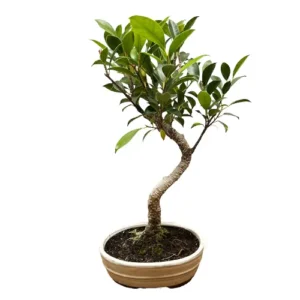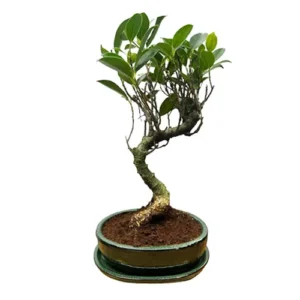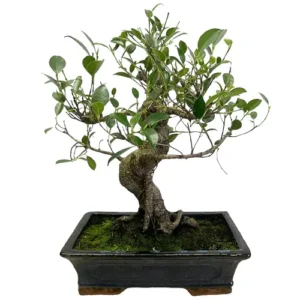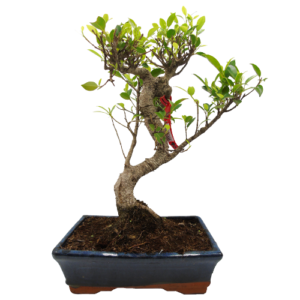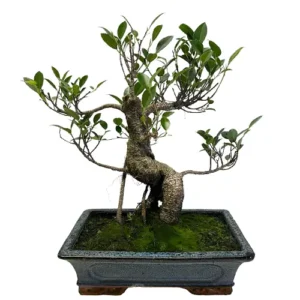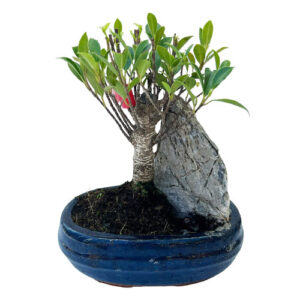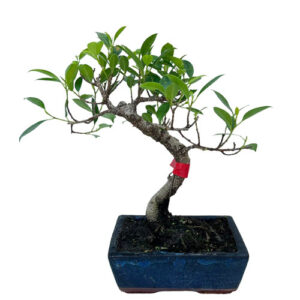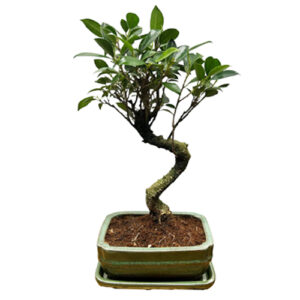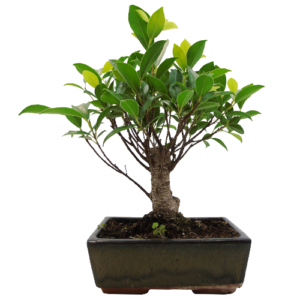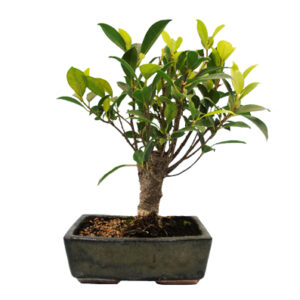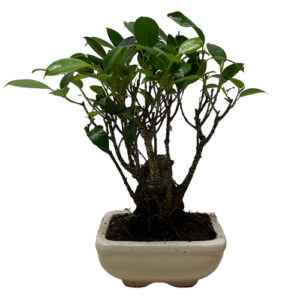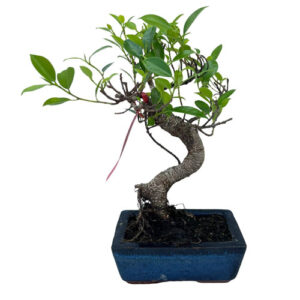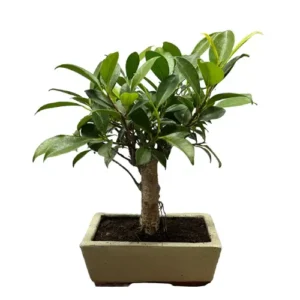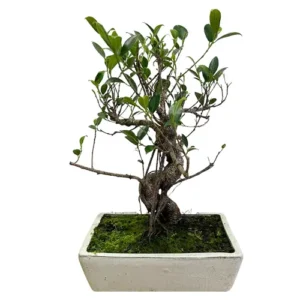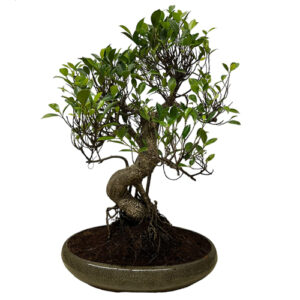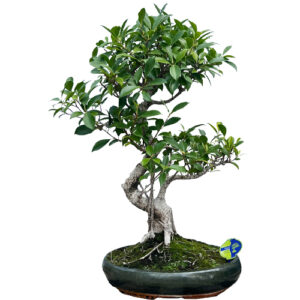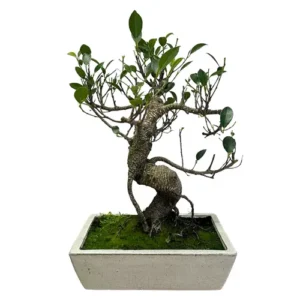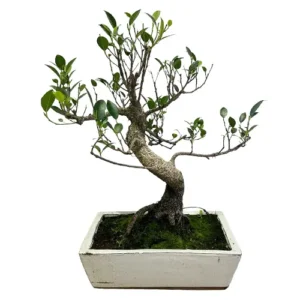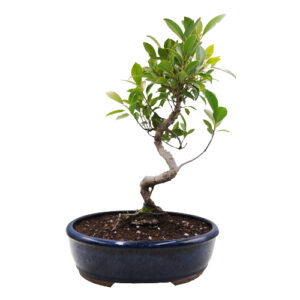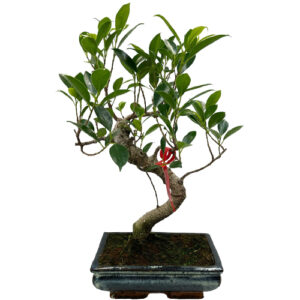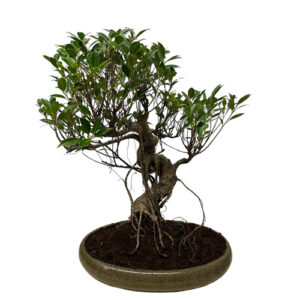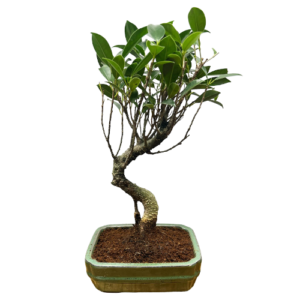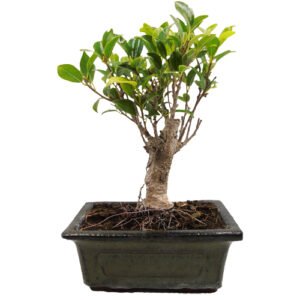Ficus microcarpa
Ginseng Bonsai
The ficus is the most popular bonsai for beginners, and the genus can be found in most tropical climates around the world, making it the perfect indoor variety. Ginseng Bonsai are popular not only for their ease of care but their stately appearance. They boast raised bulbous trunks, pot-bellied and thick, standing out in any display.
Ginseng Bonsai Care Tips
Placement
Ginseng Ficus thrive indoors, they appreciate a consistent 14-18 degrees C temperature. A spot by a window during the day wouldn’t go amiss either. Consider moving outdoors for the summer months given the right bright conditions.
Watering
Ginseng bonsai needs watering as soon as the soil begins to dry. This can be tested by checking the base of the plant, if soiled and dusty then the bonsai can be watered generously. Like any ficus, be mindful of overwatering, do not leave the soil drowning on its surface.
Feeding & Fertilizing
Ginseng bonsai only requires feeding across the growing season once or twice per month. A general fertilizer is advised.
Pruning & Wiring
Ginseng respond to regular pruning. After 6-8 leaves have grown prune back to 2. For thickening the branches, Ginseng can be left to freely grow for a year or two. After strong cuts, consider covering larger wounds with cut paste.
Ginseng bonsai can be wired anytime across the year and are suitable for a range of different styles. We recommend using wires with a thickness that matches the thickness of the branch: if the wire you choose is too thick you will damage the bark. If it is too thin, it won’t be effective.
Repotting
Repotting your tree is an important way to provide a fresh and suitable soil mix and ensure appropriate root health. Repot your Ginseng bonsai every other year during the spring with a basic bonsai soil mixture. This specimen handles root pruning well, no special care is needed during the process.
Trees that are ready for repotting will require root pruning, a suitable new pot and appropriate soil mix.
When repotting, do not cut back the root mass by a large amount, and choose a well-draining soil mix that has a neutral or slightly higher PH value of 5-6 but not over 7. We tend to use a mixture of different speciality bonsai soils on our trees. Every species is different so please contact us for free soil-mix advice or to take advantage of our repotting service.
Bonsai make for a one-of-a-kind indoor plant offering elegance, nature and art all in one minute form. Across an array of exquisite and erudite species, they all demand their own specific care and cultivation needs in order for their beauty to flourish. We have an extensive library of care guides for indoor bonsai trees so you can make an informed and considered choice. It’s not about selecting the perfect bonsai, it’s about selecting the perfect bonsai for you.
Ginseng Bonsai - Typical Queries
How to propagate a Ginseng bonsai tree?
The best time to propagate your Ginseng bonsai is right after pruning. Choose a healthy stem and make a 6-inch cutting. Place cutting in a prepared container then water. Cover with a clear plastic bag to keep moisture and make a greenhouse effect. Water lightly every so many days to keep the soil moist. In two to six weeks the cutting should root.
Is a Ginseng Bonsai soutaible for pets?
Unfortunately no. Ginseng bonsai is toxic to cats and dogs.
Can Ginseng bonsai get pests and diseases?
Ginseng bonsai can fall pray to aphids, mealybugs, scale and spider mites. Pests can be health with insecticide or neem oil. Overwatering can bring on root rot and fungal disease. Remove any leaves with black or white spots and treat the tree with fungicide.


